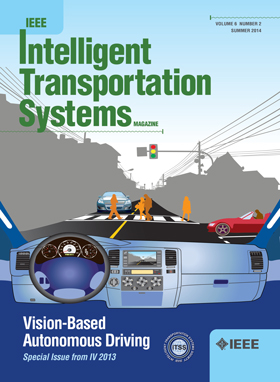MDGNN: Multiple Flight Safety Incidents Prediction Model Based on Dynamic Graph Neural Networks
IF 7.9
1区 工程技术
Q1 ENGINEERING, CIVIL
IEEE Transactions on Intelligent Transportation Systems
Pub Date : 2025-03-11
DOI:10.1109/TITS.2025.3526946
引用次数: 0
Abstract
Flight safety incidents, such as hard landings and tail strike risks, represent critical concerns during the landing phase. Although Quick Access Recorder (QAR) systems collect extensive multivariate flight data, previous studies have faced challenges in effectively modeling the complex interdependencies between flight parameters, which has limited their ability to predict multiple safety incidents simultaneously. To address this issue, we propose a novel model, named MDGNN, to capture hidden spatio-temporal dependencies and predict both hard landing and tail strike risk incidents. Specifically, we employ temporal convolutional networks (TCNs) to extract both localized representations and long-term temporal trends from multivariate flight data, ensuring the standardization of flight parameters across varying frequencies. Additionally, we are the first to construct a dynamic graph to model temporal relationships, applying a dynamic graph neural network and a temporal convolution module to accurately capture intricate spatial and temporal dependencies. Extensive experiments conducted on 37,904 Airbus A320 flight samples demonstrate that the MDGNN model surpasses state-of-the-art baselines with high prediction accuracy. Furthermore, a case study visualizing key flight parameters highlights the model’s ability to reveal the root causes of safety exceedances, offering valuable insights for flight safety analysis.求助全文
约1分钟内获得全文
求助全文
来源期刊

IEEE Transactions on Intelligent Transportation Systems
工程技术-工程:电子与电气
CiteScore
14.80
自引率
12.90%
发文量
1872
审稿时长
7.5 months
期刊介绍:
The theoretical, experimental and operational aspects of electrical and electronics engineering and information technologies as applied to Intelligent Transportation Systems (ITS). Intelligent Transportation Systems are defined as those systems utilizing synergistic technologies and systems engineering concepts to develop and improve transportation systems of all kinds. The scope of this interdisciplinary activity includes the promotion, consolidation and coordination of ITS technical activities among IEEE entities, and providing a focus for cooperative activities, both internally and externally.
 求助内容:
求助内容: 应助结果提醒方式:
应助结果提醒方式:


